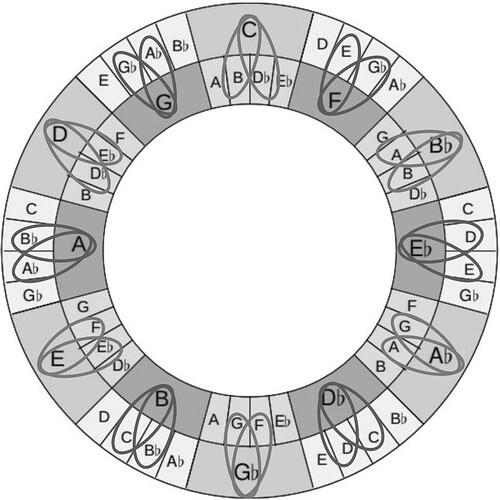This book will free all of you:
4% of people can’t be trained
and for the people who can be trained, some grasp it easier than others, in the same way that some people are better at maths than others - that’s all I was saying
Nowhere does it say those people can’t be trained, in fact “one study has shown tone differentiation techniques to have some success.”
Some people are better at maths primarily because they’re more experienced with it.
You’re saying that if somebody is crap at something, they can’t improve, which is self-fulfilling.
So basically you’re saying that regardless of what your strengths and weaknesses are, anyone can be as good as anyone else at anything? I don’t agree, so let’s just leave it at that cos I cba to argue
What’s the scientific term for the 99% of white people who have no rhythm?
A good analogy would be color vision: if someone lacks chromatic perception on a biological level, they can never be trained to actually see it - at best they’d just get good at context and monochrome recognition of color, which is not the same.
My statement was simplified on purpose. There is definite math behind why certain frequencies and wave phase relationships are sonorous to humans raised on music with it’s melodic roots in western art music, and the golden ratio is definitely a part of that.
The reason phi is used to tune most modern western fixed pitched instruments (e.g. a piano) is not because it’s the most sonorous, but because it allows for greater tonal harmony throughout a typical 88 key scale on a piano. Pythagorean tuning had the wolf fifth, and just intonation only harmonizes with itself for a few octaves.
have heard of what you’re referring to before, in a number of different ways. are you familiar with the experimental tunings of harry partch? He divided the octave into 43 unequal tones derived from the natural harmonic series, and it still sounds sonorous.
And is it conditioning, or innate biology? Anirudh Patel a neuroscientist and author of “Music, Language, and the Brain” argues that a culture’s musical preferences, concepts of harmony, melody, and rhythm are a direct relationship to the way that culture’s language has evolved, and moreover, illustrates findings in neuroscience that a direct correlation exists between language and music processing in the human brain.
I struggled through 4 semesters of aural skills. if I can be trained to detect relative pitch, anyone can. I had friend in university who had perfect pitch. Aural skills was harder for him because of his ‘gift’.
Also he told me his perfect pitch was something he developed as a result of being forced to learn the piano as a 4 year old japanese kid, not something he was born with.
I’ve known enough pianists (professional and otherwise) to know that perfect pitch is not what most people think it is.
It isn’t? 12-tet is a detuning of ratios of small integers, not phi. The exceptions would be ratios of successive Fibonacci numbers, especially higher ones.
Yes, ratios of small integers sound consonant, but consonance and beauty are not the same thing.
Previous banter on this topic:
https://www.dubstepforum.com/forum/viewtopic.php?f=8&t=263928&hilit=microtonal
And as much as I’m a fan of crazy piquant shit, the Golden Ratio (or der Goldene Schnitt as the Germans call it) is sort of… Maybe a bit confabulatory:
http://measureofdoubt.com/2011/08/29/lies-and-legends-about-the-golden-ratio/
Are you referring specifically to the Parthenon or the ratio in general? If the latter, have you attempted to reproduce my findings and if so how do you explain them?
Do you guys even play minor 9th chords?
All about that major diminished 13th. Exclusive to the Yamaha Leap Keyboard.
Depends on the type of song. If it’s a heavy “rock out on the root” then F or G are great for that. If it’s something more melodic then I like A minor, gives you the option of moving about and hitting those low F & D (minor 6th and 4th?)
It’s a modified circle of fifths.
It’s backward from the circle of fifths as a chart.
C resolves to F.
F resolves to B flat.
B flat resolves to E flat.
etc.
Fm
